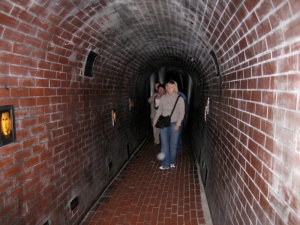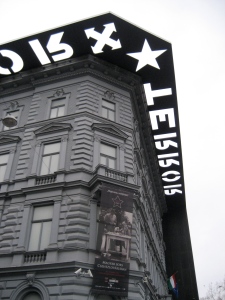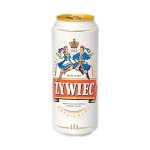Lenin’s Leftovers
Nowa Huta (meaning literally the “New Steelmill”) is the easternmost district of Krakow with over 200,000 inhabitants today. Immediately following the communist take-over of Poland in 1945, the Party authorities encountered strong resistance from middle-class Krakowians. In order to maintain authority, the communist government commenced building a satellite industrial town to attract people from lower socioeconomic backgrounds to the region and thus creating an “ideal” town for Party propaganda. The town was a feat of socialist realism architecture and careful urban planning. Many important people including Fidel Castro visited Nowa Huta to see this new model.
In 1954, the Lenin Steelworks opened, and in less than 20 years the factory became the largest steel mill in Poland. Factory workers were given a place to live and even a garage for their cars, although no one owned one and 5,000 garages remained empty. Following the opening of the factory, Lenin made a high-profile visit to Nowa Huta and a year later a statue of him was unveiled in Strzelecki Park. The monument was moved to the Lenin Museum soon after, and thereafter mysteriously disappeared. In 1970 the decision was made to construct a new one in a highly visible central square.
Only four artists were considered, and Marian Konieczny won the commission. Coincidentally, the artist was living in Lenin’s former flat from the time he spent in Krakow in 1912. His depiction of Lenin was slightly bent as if walking forward, and the artist explains that the statue of Lenin, “like his ideas, are in perpetual march forward.” Ironically enough, all factory workers were required to help pay for the construction of the massive statue from their own salaries even though no one wanted it constructed.
Forced to contribute to a highly visible symbol of a regime they despised, the residents of Nowa Huta constantly plotted on how to get rid of the statue. In 1979 a bomb was planted at the base, with two packs of explosives each weighing 6 kilograms attached to the legs. The prankster thought if the explosion broke the legs, the whole statue would topple. The blast was so powerful that neighboring houses were damaged with broken windows, etc. The only casualty was a local man who died of shock waking up by the explosion. Despite the strength of the blast, the statue remained standing.
Later attempts to destroy the statue were also in vain, including efforts to pull down the statue as well as an arson attack. Finally on December 10, 1989, Lenin was picked up by a giant crane, boxed up and left abandoned in storage. Authorities held an auction for the statue, but there were no bidders. Years later a Swedish businessman and philanthropist bought him for 100,000 Swedish crowns, and had him shipped to a museum outside of Stockholm.
After the fall of communism, these massive monuments of the old regime proved problematic in many places in the former Soviet Union and its satellite states. Highly visible, they stand representing a period of history that locals wish to forget. Today in Nowa Huta, the former street named after Stalin has been renamed for Ronald Reagan. These small but highly symbolic changes matter most to the residents as they forge ahead into the future. The square near the center of Nowa Huta that formerly held the massive memorial to Lenin remains empty, but I suspect that many locals who lived in the town during a different era still vividly picture it in place.

Arial view of Nowa Huta depicting the carefully planned city.

Former sign in front of the steel mill, named for Lenin.

Protecting Lenin: Nowa Huta, Poland



 Facade of House of Terror, Budapest Hungary (no photography allowed inside museum)
Facade of House of Terror, Budapest Hungary (no photography allowed inside museum)





 Poles seem to be accustomed to the hordes of tourists visiting Krakow, and I feel nostalgic for my days of being the only tourist in town. When I lived in Novi Sad, I drew attention as a foreigner and was constantly asked by taxi drivers or street venders where I come from- “What is an American doing in Serbia?” they would ask me, and I would respond enthusiastically “Učim srpski jezik!” My answer was followed by stares of disbelief and sometime bursts of laughter. No Serb could believe that a young American woman moved to the country to study their culture.
Poles seem to be accustomed to the hordes of tourists visiting Krakow, and I feel nostalgic for my days of being the only tourist in town. When I lived in Novi Sad, I drew attention as a foreigner and was constantly asked by taxi drivers or street venders where I come from- “What is an American doing in Serbia?” they would ask me, and I would respond enthusiastically “Učim srpski jezik!” My answer was followed by stares of disbelief and sometime bursts of laughter. No Serb could believe that a young American woman moved to the country to study their culture.